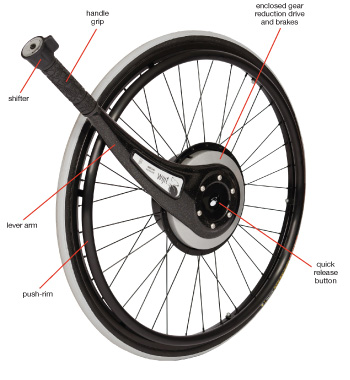This week, we began to brainstorm our solution with possible device elements. We came up with the following: one way rotating element, a brake, clutch (de-coupler) – direction change, height adjustment, and spring return.
For the one-way ratchet, the pros of this device are that it expands the patient population and is simple to integrate into the design. The cons of this device are that it requires a more expensive component and there is a possible point of failure with a higher increase in wear and tear.
For the brake, the pros are that it allows the user to stop the wheelchair immediately and allows the user to turn more tightly. The cons of this device are that it adds another layer of complexity and depending on the condition of the patient, he or she may not be able to make a gripping motion.
For the clutch, a pro is that it allows the wheelchair to change directions and move backwards. A con is that it adds complexity to the design in trying to find a way to integrate the clutch into the lever so the patient can easily use it.
For the height adjustment, the pros are that the device can adjust to different body types (i.e. height, limb length), it is a simple feature to add and it could be a means to optimize torque. A con is that if we implement a break system, the chord and cable lengths would need to adjust to that increase in height.
For the spring return, the purpose of this element is to help the patient use the device by having the lever spring back to its original location after each time the lever is pushed forward. The pro to this element is that it keeps the patient backed against the seat, helping patients with trunk instability. The cons to this element are that the lever would need to be attached to the outer part of the wheel and a larger force would be required to push the levers.
Lawrence Hipolito
MPOWRD

